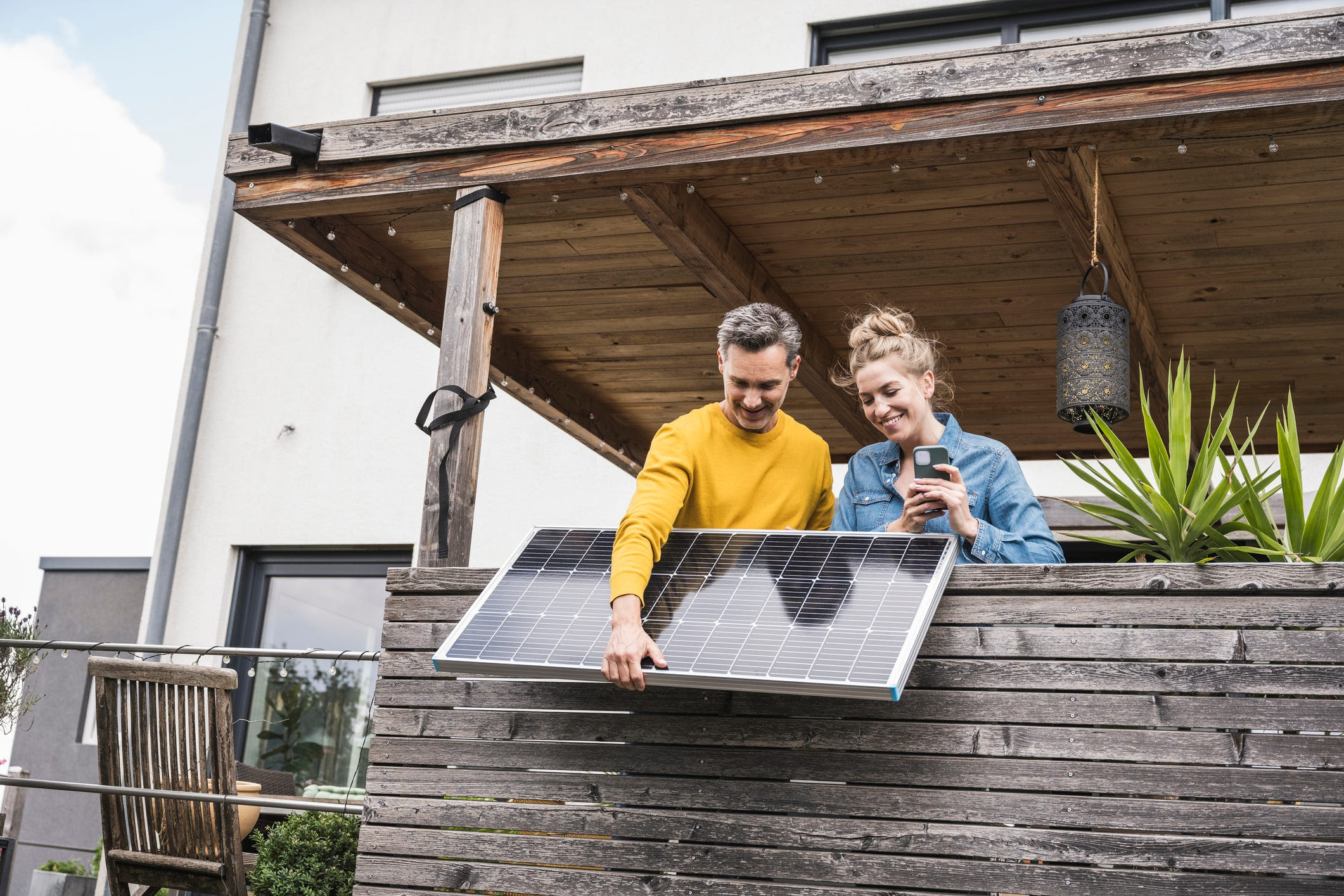Solar balconies are the equivalent of puppy pictures
Editor’s Note: Bill McKibbin’s newsletter today reports on a trend in Europe — to add standalone solar panels on your balcony and simply plug it into your house, no electrician needed. It costs about $500 and pays for itself in reduced electricity bills quickly. And yet, it’s not really available in the US, because “installing solar in the U.S. requires complying with an insane welter of state and local regulations. This is a huge problem for rooftop solar—it costs about $3.50 a watt to put up a system in America, compared with under a dollar in Australia or most of Europe, simply because of the paperwork and permitting.”
Is this another opportunity for bipartisan permitting reform?
|
|
|||||||||||||||
… Here’s something nice to think about, the energy equivalent of pictures of golden retrievers pouring out of a kennel to lick your face.
What we’re talking about is what the Germans call a balconkraftwerk, or Balcony Energy Plant. I wrote about it earlier in 2024, but a refresher: we’re talking small solar panels that you hang off your balcony and plug into your house, where they provide power. Not huge amounts of power, like solar panels on your roof, or the battery in your EV. But enough power to run a router or a small fridge.
… In the wake of Russia’s invasion of Ukraine, Germany—and much of the EU—did all sorts of things to boost renewable energy. One of the small but symbolic ones was relax the regulations for putting up these small solar systems. Basically, you just go to the German equivalent of Home Depot and buy one and put it up. No electrician, no paperwork. According to Grist they cost about $500, complete with inverter; for a little more you can get a small battery to store your afternoon’s sun for evening use. Since half of Germans live in apartments, they’ve become incredibly popular
“I love the feeling of charging the bike when the sun is shining, or having the washing machine run when the sun is shining, and to know that it comes directly from the sun,” one tenant said. “It’s a small step you can take as a tenant” and an act of “self-efficacy, to not just sit and wait until the climate crisis gets worse.”
In fact, they’re so popular that German cities are now passing laws making it impossible for landlords to block the installations, and providing subsidies to spur their spread. These small solar panels are spreading across Europe, and so every day new products appear—here’s an example from last week. It’s written in the same language as any other consumer product, except that in this case it’s part of the most important revolution in human affairs in our lifetime.
One of the concerns about balcony solar system has been the cost and payback period, especially when storage is involved. BigBlue addresses these issues head-on by offering an affordable solution that does not compromise much on quality or performance. With a reduced cost & super early bird promotion from €459, the payback period of the new POWAFREE H3/H4 is notably favorable, allowing users to recoup their investment quickly through significant energy savings and reduced electricity bills.
There’s finally been a little coverage in the U.S.—here’s a good story in the Times—but almost all of it avoids asking the obvious question: can I do this here? And the answer, basically, is no: installing solar in the U.S. requires complying with an insane welter of state and local regulations. This is a huge problem for rooftop solar—it costs about $3.50 a watt to put up a system in America, compared with under a dollar in Australia or most of Europe, simply because of the paperwork and permitting. But it’s even a problem for this kind of thing, which poses no real danger. I mean, ask yourself: who are the most rules-bound people on earth? I’d vote for Germans. If these things were actually dangerous—well, they’ve conducted a giant real-world study for us.
But check out this Reddit thread about the basic impossibility of doing this here. Or this daunting list of technical requirements for Americans. Here’s the leader of GismoPower explaining the current situation
Plug-in solar in the United States does not yet legally exist, and there are no related codes or standards established yet. Why?
Every state in the nation is contending with regulatory inconsistencies due in part to differing regulations set by local AHJ’s or utilities and the absence of a unified federal law, leaving the U.S. trailing behind in Plug-and-Play Solar adoption.
The good news is, amidst these challenges, the Department of Energy has revived its commitment to developing a new UL-Standard for Plug-In PV systems. This represents a significant step forward, acknowledging the untapped potential for renewable generation, particularly for disadvantaged and underserved communities, those with inadequate roofing for traditional solar panels, and renters.
So maybe if we elected someone who liked renewable…no, forget about it. We’re not talking about that Thing. We’re just working on it. Back to the phone. With one more picture to make you happy, in a Teutonic sort of way.



